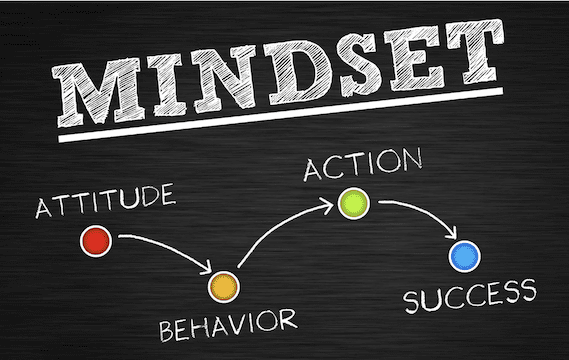Have you ever wondered, “How long does it take to learn a language?” The answer depends on several factors: your goals, mindset, background, learning methods, natural ability, and the language itself.
But probably the most important consideration is, “How much of the language do you need to learn to meet your objectives?” It won’t take too long to learn enough survival language to travel overseas for tourism. But if you’re moving overseas for college or work, and you need to cope with most life situations in a language that is very different from English, it’s going to take a lot longer.

At the International Language Institute (ILI) in Northampton, Massachusetts, we’ve helped thousands of students master languages like Spanish, English, French, German, and Italian.
Whether you’re preparing for travel, work, or personal enrichment, there’s no one-size-fits-all answer—but we’re here to help you find the best way to learn a language for you, and set realistic expectations.
Let’s explore the key factors that determine how long it might take for you to achieve your language learning goals.
1. Your Proficiency Goals
Your goals play a central role in determining how long it will take to learn a language. Are you aiming to order coffee and ask for directions while traveling, or are you preparing to work in a professional environment abroad? The level of proficiency you need directly impacts the time and effort required.
Understanding the CEFR Levels
The CEFR (Common European Framework of Reference for Languages) is the most widely used system for measuring language proficiency. It divides learners into six levels:
- A1 (Beginner): You can use simple phrases, introduce yourself, and interact in basic ways.
- A2 (Elementary): You can handle simple tasks, like shopping or giving directions, and understand commonly used expressions.
- B1 (Intermediate): You can engage in straightforward conversations about familiar topics, manage travel situations, and express opinions.
- B2 (Upper Intermediate): You can discuss a wide range of topics, express yourself clearly, and navigate professional or academic environments.
- C1 (Advanced): You can use the language fluently in nearly any context, including work and study.
- C2 (Proficient): You can understand and communicate with the ease of a native speaker.
Other Scales You Can Use
ILR (Interagency Language Roundtable)
The ILR scale is widely used in U.S. government and military contexts. It measures language proficiency on a 0 – 5 scale, with Level 1 equivalent to basic survival skills, Level 3 representing professional working proficiency, and Level 5 indicating native or bilingual proficiency.
ACTFL (American Council on the Teaching of Foreign Languages)
The ACTFL scale is commonly used in academic and language education settings in the U.S. It divides learners into five main levels:
- Novice (Low, Mid, High): You can use survival phrases and take part in very basic interactions.
- Intermediate (Low, Mid, High): You can engage in basic conversations and navigate daily life.
- Advanced (Low, Mid, High): You can discuss abstract topics, express opinions, and function in professional settings.
- Superior: You can participate in highly nuanced conversations and professional interactions.
- Distinguished: Reflects near-native fluency.
How the Scales Compare
While CEFR is the most commonly referenced framework worldwide, it aligns closely with ACTFL and ILR. For example:
- CEFR A1 = ACTFL Novice Mid = ILR Level 1
- CEFR B1 = ACTFL Intermediate Mid – High = ILR Level 2
- CEFR B2 = ACTFL Advanced Mid = ILR Level 3
If your goal is conversational fluency for personal or professional use, aiming for CEFR B1 or B2 (ACTFL Intermediate High – Advanced Mid) is often sufficient. Reaching C1 or higher is typically necessary for academic study or advanced professional work.
The most important thing is to know what you’re aiming for.
2. The Language Itself
Some languages are easier for English speakers to learn than others.
According to the Foreign Service Institute (FSI), which has decades of experience training U.S. diplomats, languages are categorized based on their similarity to English.
The closer the language is to English in terms of grammar, vocabulary, and pronunciation, the faster you’ll be able to learn it.
FSI Language Categories with CEFR and ACTFL Levels
Here’s how long it typically takes to reach proficiency levels in different language categories:
Category 1: Easier Languages
A mix of Romance and Germanic languages closely related to English, such as Danish, Dutch, French, Italian, Norwegian, Portuguese, Romanian, Spanish, and Swedish, fall in this bucket.
- 150 Hours to get to CEFR A1 / ACTFL Novice High: Understand and use basic phrases and complete simple interactions.
- 750 Hours to get to CEFR B1 / ACTFL Intermediate High: Engage in everyday conversations and navigate common social or travel situations.
Category 2: Moderately Challenging Languages
This classification, which includes German, Indonesian, Malay, and Swahili, closely resembles English in many ways, but grammar twists and cultural considerations tack on several more months of study compared to Category 1
- 200 – 300 Hours to get to CEFR A2 / ACTFL Intermediate Low: Communicate in routine tasks and understand frequently used expressions.
- 900 Hours to get to CEFR B1 – B2 / ACTFL Intermediate High – Advanced Low: Discuss more complex topics, read longer texts, and manage most professional situations.

Category 3: Difficult Languages (Russian, Turkish, Polish, etc.)
Marked by significant linguistic as well as cultural differences from English, these languages include Albanian, Czech, Finnish, Greek, Hebrew, Hindi, Polish, Russian, Somali, Turkish, Ukrainian, and Vietnamese (the list goes on).
- 300 – 400 Hours to get to CEFR A2 / ACTFL Intermediate Low: Handle basic interactions and describe familiar topics.
- 1,100 Hours to get to CEFR B1 – B2 / ACTFL Intermediate High – Advanced Low: Achieve conversational fluency, navigate work-related situations, and comprehend detailed materials.
Category 4: Very Difficult Languages (Arabic, Japanese, Chinese, Korean, etc.)
This exclusive sphere is reserved for exceptionally challenging languages such as Arabic, Chinese, Korean, and Japanese.
- 500 – 600 Hours to get to CEFR A2 / ACTFL Intermediate Low – Mid: Communicate in routine situations and understand simple texts.
- 2,200 Hours to get to CEFR B2 – C1 / ACTFL Advanced Mid – Superior: Speak fluently, read sophisticated materials, and function confidently in academic or professional contexts.
3. Your Learning Methods
The best way to learn a new language combines high-quality instruction with consistent practice. While self-study tools like apps and videos are valuable, working with a teacher or joining a structured class can dramatically accelerate your progress.
At ILI, we offer a variety of flexible options:
- In-person language classes: Immerse yourself in a supportive classroom environment with experienced instructors.
- Online language courses: Whether you want to learn Spanish online or learn French online, our courses provide expert guidance and personalized feedback to help you succeed.
4. Real-Life Examples from ILI Students
At ILI, we’ve seen students achieve incredible success. Here are some inspiring examples:
- Darlene: Reached conversational fluency in Spanish and is able to engage with locals when traveling abroad to Spanish speaking destinations like Argentina and Puerto Rico. She also shared a memorable moment with us where her Spanish skills made a practical difference at a vaccination site in Amherst, guiding Spanish-speaking individuals with ease.
- Andy: Took Portuguese at ILI to connect with international artists. He teaches basic musicianship and jazz harmony at a university in Taipei—an experience that involves regularly performing almost every night and actively using Portuguese to explain Brazilian musical terms. He also shares that, in Taipei’s vibrant international setting, he plays in several Brazilian bands and leverages his Portuguese skills to connect with the local expat community.
- Takehiro: Improved his skills through ILI’s Intensive English Program and built a successful career in the U.S. He shared with us a turning point when his enhanced language proficiency proved crucial during job interviews and professional interactions, opening doors to new career opportunities. He also recounts how learning English helped him manage everyday challenges and adapt to American cultural nuances—whether it was for handling routine interactions or for understanding and participating in social contexts at work and beyond.
5. Your Mindset
Here’s a fun word: Xenoglossophobia.
That’s the feeling of anxiety, dismay, or fear experienced while learning or speaking a foreign language (xeno = foreign + glosso = language + phobia). This is a completely normal reaction – after all, stepping out of your comfort zone to speak a new language can feel daunting! However, overcoming these feelings is key to making progress.

Whether you’re polishing your college French or just dabbling with Japanese characters, maintaining a can-do attitude is essential. Doubts and discouragement can stretch a planned 150 hours of study into 200, 250, or more.
The good news? You’re not alone, and with the right mindset, you can overcome these hurdles and thrive.
Strategies for a Positive Mindset
- Consistency is key. Successful language learners make a plan and stick to it. Practicing a little bit every day builds momentum, which helps carry you over the inevitable bumps in the road. HOWEVER… not beating yourself up if you do lose a bit of momentum is also important. Some people’s brains work well with the routine of a daily dose, while for others, that can feel like a constraint.
- Learning within a community. Taking regular classes with other folks that are also striving to learn a language is a great way to build community, and enjoy the feeling of working towards a shared objective.
- Adopt a growth mindset. The belief that your brain is malleable and your skills can improve is powerful. Talents are not fixed, and skills are endlessly adaptable. Embrace the process, stay curious, and celebrate small victories—every new word or phrase is a step forward! The mental difficulty you feel when grappling with a new language is your brain forming new connections and neural pathways. If it’s hurting your head, it’s probably a good sign, so celebrate the win!
- Mistakes are part of the process. It’s tempting to tie your self-worth to success, but mistakes are invaluable learning opportunities. Instead of seeing errors as failures, reframe them as stepping stones on your journey to fluency. In our article on Strategies for Expanding Your French Vocabulary Abroad, we talk some more about how mistakes and misunderstandings are powerful catalysts in learning.
Engage Your Passions
How much time it takes to learn a new language is also affected by the subject matter you need to cover. Learning becomes easier when it’s tied to your interests. Use the language to explore things you love – gardening, social justice, jazz music, or cooking. Write about family history or dive into your favorite sci-fi books. Vocabulary becomes “stickier” when it connects to something you care about.
At ILI, we know how important it is to feel supported as you navigate the challenges of learning a language. Our classes are designed not just to teach but to encourage, helping you build confidence every step of the way.
6. Tools and Teachers
Self-taught learners can make impressive progress, especially with the right tools: books, apps, games, videos, and even informal conversation circles. However, even the most disciplined autodidacts benefit from guided instruction. Teachers play a critical role in providing immediate feedback, encouragement, and insights that speed up language acquisition.
The ideal approach combines self-study tools with structured classes or individual instruction. This blend gives you the freedom to practice on your own while benefiting from expert guidance.

The Right Tools Make a Difference
Here are some tools and techniques to enhance your learning:
- Mnemonic devices: Transfer information from short-term to long-term memory using creative aids like:
- Rhymes (e.g., “Thirty days hath September…”).
- Acronyms (e.g., FANBOYS for the coordinating conjunctions: for, and, nor, but, or, yet, so).
- Chunking (e.g., remembering phone numbers as smaller groups of digits).
- Acrostics (e.g., Every Good Boy Does Fine for the treble clef lines E-G-B-D-F).
- Diglot Weave Technique (DWT): Blend new vocabulary into sentences in your native language. For example, “I’ll tomar coffee and después work on my project.” This technique works wonders for verbs, nouns, and adjectives.
- Brain soaking: Immerse yourself in the rhythm and patterns of a language, even if you don’t fully understand it. Listen to Spanish podcasts, play French audiobooks, or stream German TV shows in the background.
- Spaced repetition: Use flashcards or apps like Anki to revisit vocabulary at timed intervals. New and difficult words are repeated more often, while easier ones are spaced out.
The Role of Teachers
An instructor, whether in a classroom or one-on-one setting, is more than just a guide – they’re your partner in learning. Teachers:
- Provide structure and accountability.
- Offer immediate corrections to keep you on track.
- Share cultural insights that bring the language to life.
At ILI, our experienced teachers bring a wealth of knowledge and encouragement to every lesson. Our interactive classes foster a sense of community, ensuring you feel supported throughout your journey.
7. Previous Language Learning
Did you study German in college? Or dabble in Spanish before deciding to try Portuguese? If so, you already have a head start!
The Advantage of Experience
When you’ve learned a language before, you likely have effective study habits that can transfer to your next learning experience. Additionally, languages often share cognates – words with similar meanings and forms – making vocabulary easier to acquire.
Mutual Intelligibility
Related languages can give you an extra boost through mutual intelligibility, where speakers of one language can understand another without formal study. For example:
- Speakers of Norwegian, Swedish, and Danish can often communicate across their languages.
- Learning Czech can make Slovak easier to understand.
- Portuguese and Spanish speakers often grasp each other’s languages with little effort.
However, beware of asymmetric mutual intelligibility, where one language’s speakers can understand another’s, but not vice versa. For example, Portuguese speakers can pick up Spanish faster than Spanish speakers can learn Portuguese due to pronunciation and vocabulary differences.
Transferable Knowledge
As you move between languages, you might notice transferable skills:
- Grammatical structures (e.g., verb conjugations).
- Shared vocabulary (e.g., Romance languages like Spanish and French).
- Pronunciation techniques developed from previous studies.
Every language you learn builds a foundation for the next, and this will affect how much time it takes you to learn a new language. At ILI, we celebrate and leverage your existing knowledge to help you succeed.
8. The Big Picture
Realistically, as a working adult, you might only have a few hours per week to devote to language study – and that’s okay. Progress is possible, even with a limited schedule.
For example:
- 50 hours over a few months can help you master essential Spanish phrases to confidently navigate everyday scenarios—from ordering food at a restaurant and taking public transportation to negotiating in local markets and booking reservations. These skills will empower you to travel seamlessly in Spanish-speaking countries or volunteer in bilingual environments.
- 100 hours spread over a year could enable you to handle essential travel and engage in more detailed conversations that could support workplace communication.
Focus on Comprehension First
To accelerate language acquisition, prioritize comprehension over accuracy. The goal is communication – no one is grading you! Start with a small vocabulary of core verbs and nouns and mix them up to express yourself, no matter how rudimentary it feels.
Tips for Getting Started
- Use gestures, mimic facial expressions, and practice sounds aloud.
- Play games, draw pictures, or create stories to make learning fun.
- Join a community of learners – such as a class at ILI – to stay motivated and connected.
- Use your favorite AI tool to challenge you, speak to you, quiz you and support you in your language learning.
Every journey begins with a single step. At ILI, we believe in celebrating your progress, no matter how small. The process of learning a language is not just about acquiring a skill – it’s about discovering new cultures, building connections, and opening doors to exciting opportunities. If you’re enjoying the ride, you’ll be less worried about how much time it takes to learn the language.
Helpful links:
Explore ILI’s online and in-person courses:
- Explore our language courses
- Learn English
- Learn Spanish
- Learn Italian
- Learn French
- Learn German
- Learn Portuguese
Speak to a real person about your language learning goals, or enquire on behalf of your workplace to access subsidised language learning for your company.
